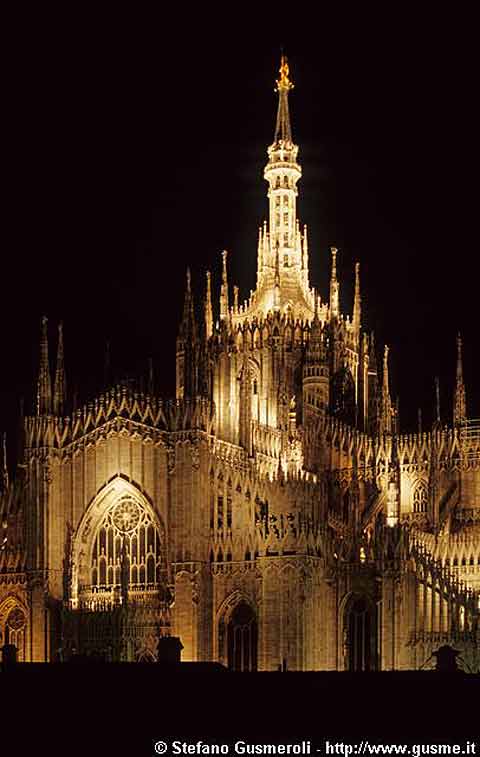
Like all medieval cathedrals, especially the Gothic ones, the Duomo too, was designed to transmit, with its architecture and store of decorations, the message of Christian salvation which would be fulfilled through the incarnation of the Son of God.
Two courses must be identified and pursued to understand this spiritual message which was entrusted to the rising cathedral and carried out with coherent continuity over the centuries.
The way of God towards man has its origins in the central stained glass window of the apse, deliberately facing east.
The sculpture inserted into the marble filigree of the rose window dictates the theme of the great luminous wall and gives meaning to the entire temple.
The great wheel (=spoke) of the blazing sun, the Sun of justice that rises from the East symbolizing Jesus Christ;
to the right, the Virgin Mary astonished by the words of the Archangel Gabriel who kneels in front of her announcing her divine maternity.
With Mary’s acceptance Jesus enters into the history of humanity and brings the light of salvation. Nearby Saint Ambrose and Saint Galdinus witness the faith of the people of Milan, in grateful adoration.
From the great apse facing east, where at every dawn the sun beams its light, Christ, the spiritual sun, illuminates man’s life giving an ultimate dimension to his daily journey, symbolized by 52 piers (for the 52 weeks of the liturgical and solar year).
The great stained glassed windows complete the message entrusted to the sculptural pieces which narrate the story of salvation passed down by the Sacred Scriptures: on the left the Old Testament, on the right the New Testament and in the centre the visions of the Apocalypse which touch the end of time in the ultimate truth.
Man’s journey towards God unwinds along the way of discovery and approach towards the divine. Man is not left alone: martyrs, saints from high above the monumental Gothic capitals, placed along the principal naves that intersect under the dome, sustain him with their example, so that it will be imitated, and accompany them to the Eucharistic Feast.
Next to the great central transept this procession gives way to the patriarchs, the prophets, the kings, to the central figures of the Old Testament who prepared for the coming of the Saviour: there are 60 statues placed on four gothic arches that open up under the dome.

